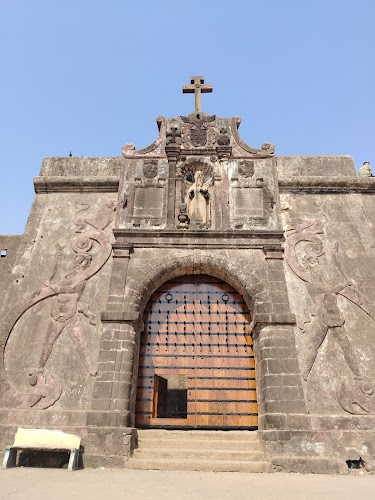
St. Jerome Fort
Daman, India
- Capture scenic views of the Daman Ganga River.
- Enjoy a peaceful walk along the ramparts.
- Explore the fort's architecture and history.
- Photograph the St. Jerome statue at the gateway.
- Visit the church and cemetery inside the fort.
Known for:
Description:
St. Jerome Fort, also known as the , is a relatively small but historically significant fort in Daman. Its most striking feature is the imposing gateway facing the river, adorned with a statue of St. Jerome, a prominent figure in Christian history. The fort provides panoramic views of the Daman Ganga River meeting the Arabian Sea. Inside, you'll find remnants of Portuguese architecture, including a church and cemetery. The fort's compact size makes it easily explorable, offering a glimpse into Daman's colonial past. It's a peaceful spot for a stroll and a great place to capture some photographs, especially during sunset. The fort offers a serene escape from the bustling town, with the calming sounds of the river and the sea breeze adding to its charm. It is a must-visit for history buffs and those seeking a tranquil experience.
History:
The St. Jerome Fort was constructed in the 17th century by the Portuguese, as part of their strategic defense system in Daman. It served as a crucial outpost to protect the harbor and control maritime trade along the coast. The fort witnessed several battles and sieges during the conflicts between the Portuguese and other European powers, as well as local rulers. Over the centuries, it underwent several modifications and renovations. After India's independence, Daman, including the fort, was integrated into the Indian Union in 1961. Today, the fort stands as a reminder of Daman's colonial past, offering visitors a glimpse into the region's historical significance and the influence of Portuguese rule.